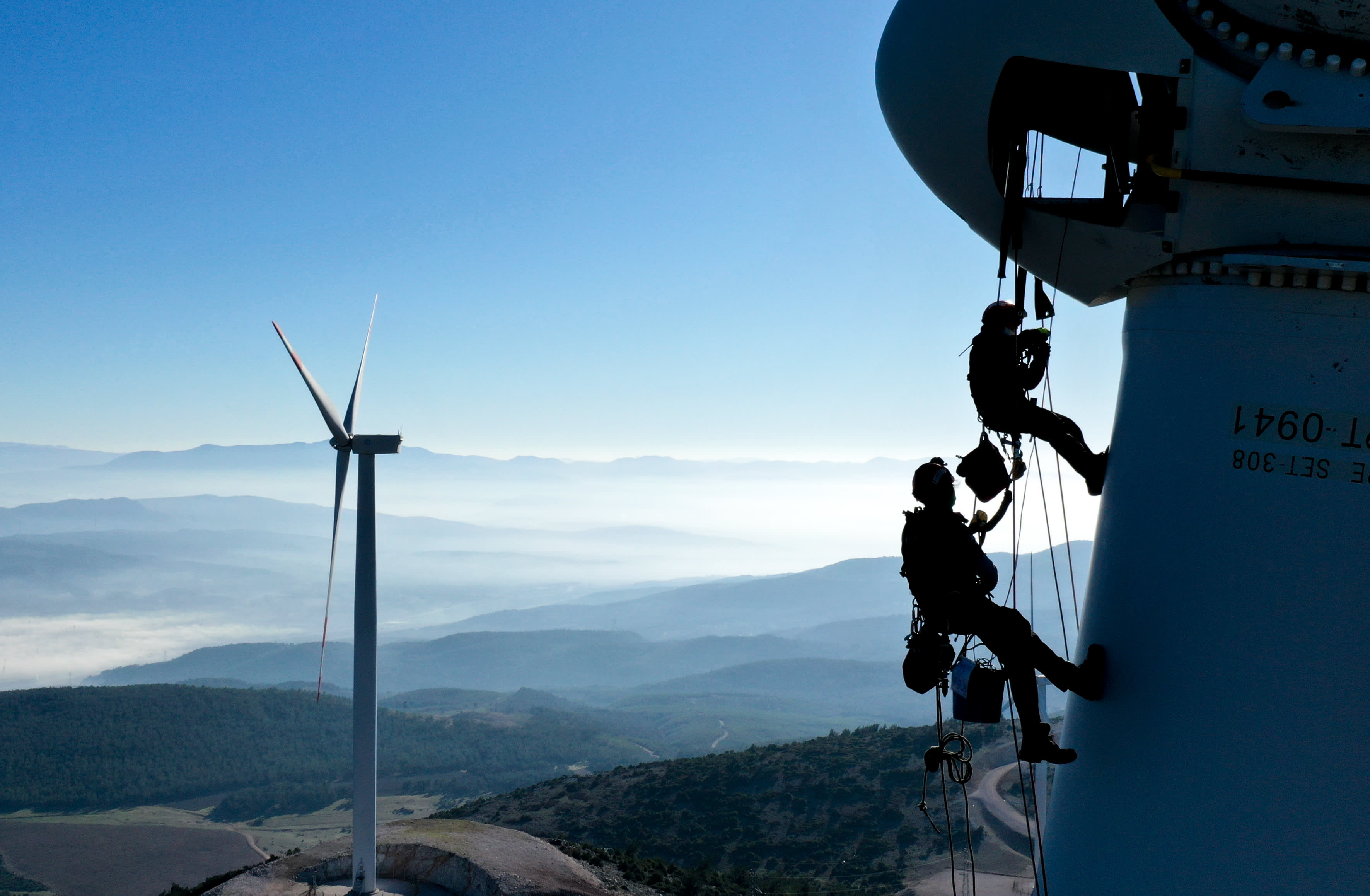A ‘quantum leap’: Monster wind turbines are going to get even bigger

LONDON — If there’s one word that can be associated with wind energy, it’s “big.” From billion-dollar deals to vast wind farms capable of powering a million homes, the industry has undergone a massive expansion in the last few years.
According to a recent report from the Global Wind Energy Council, the sector installed 93 gigawatts (GW) of new capacity in 2020, a record figure which represents a year-on-year jump of more than 50%. Over the last decade, the global wind power market has almost quadrupled.
As the industry grows, the turbines which power it are getting bigger too. In Europe, figures from industry body WindEurope show the average capacity of offshore turbines installed in 2020 was 8.2 MW, a 5% increase on the previous year.
Game changers
The last few years have seen several original equipment manufacturers, or OEMs, announce plans to develop new, large-scale turbines for the offshore sector — and the size of these new machines is considerable.
GE Renewable Energy’s Haliade-X turbine, for example, will have a tip-height of 260 meters (853 feet), 107-meter long blades and a 220-meter rotor. Its capacity will be able to be configured to 12, 13 or 14 megawatts (MW). A prototype of the Haliade-X, in the Netherlands, has a tip-height of 248 meters.
Details of GE’s Haliade-X were released in March 2018. In the years since, other big players in the sector such as Vestas and Siemens Gamesa Renewable Energy (SGRE) have rolled out designs for similarly huge turbines.
“You could see a quantum leap in the technology architecture, and the technology specifications on the turbines,” Shashi Barla, a principal analyst at Wood Mackenzie, told CNBC in a phone interview.
Competition within the sector is certainly heating up. In February, Vestas revealed plans for a 15 MW turbine. It wants to install a prototype in 2022 and expand production in 2024.
For its part, SGRE is working on a 14 MW model, the SG 14-222 DD, which can also be boosted to 15 MW if required.
Again, the dimensions of these turbines are big: the Vestas turbine will have a blade length of 115.5 meters and a rotor diameter of 236 meters. SGRE’s design incorporates 108 meter blades and a rotor diameter of 222 meters.
The nuts and bolts
The size and scope of these new designs may be impressive, but they have a practical purpose too.
When it comes to height, for instance, a taller turbine can harness faster wind speeds and produce more electricity.
A recent primer from Bank of America Global Research noted how turbine blades had “become much longer in the past 5-6 years, giving turbines a larger ‘swept area,’ thus capturing more of the wind.”
“Larger blades also allow wind turbines to run better in low wind sites, thus opening up more locations for installations,” the note added.
Rotor size is also crucial, a point Wood Mackenzie’s Barla was keen to make. Increasing the diameter of a turbine’s rotor has a bigger impact than boosting its height, he argued, “because the swept area is increasing and (if) the swept area is increasing then you’re harnessing more energy.”
The size of these components is not just for show. It’s hoped that bigger turbines will help to cut something called the levelized cost of energy, or LCOE, an economic evaluation of the total costs of an energy-producing system over its lifespan.
Logistics, logistics, logistics
It’s all well and good designing huge turbines but getting massive blades, towers and rotors to where they need to be can be a major headache.
The transportation of a tower’s components can, the DOE says, often be obstructed if they’re too big to fit underneath highway overpasses or bridges.
Blades, for example, represent a potential pinch point when it comes to logistics.
“Once fully constructed, a blade cannot be bent or folded,” the DOE says. This limits “both the route a truck can take and the radius of turns that it can make, often making elongated routes necessary to avoid urban roadblocks.”
In a phone interview with CNBC, Feng Zhao, who is head of strategy and market intelligence at the Global Wind Energy Council, summed up the challenge succinctly. “If you cannot transport the components to the site, you cannot build.”
Wood Mackenzie’s Barla made a similar point. “The biggest limiting factor for technology scale up is not the technology itself, but logistics,” he said.
“If you’re increasing the component sizes, the logistics costs increase dramatically, especially for … components like blades and towers.”
The future
As the planet tries to reduce its reliance on fossil fuels and embrace renewables, wind power will have an important role to play.
The Biden administration wants to expand offshore wind capacity in the U.S. from just 42 MW today to 30 GW by 2030, while the European Union is targeting at least 60 GW by the end of the decade and 300 GW by 2050.
And when it comes to turbines, they’re only set to get bigger, especially in the offshore sector.
“The tip heights on the next-generation offshore turbines will inch towards 300m in the next decade,” Wood Mackenzie’s Barla told CNBC via email.




